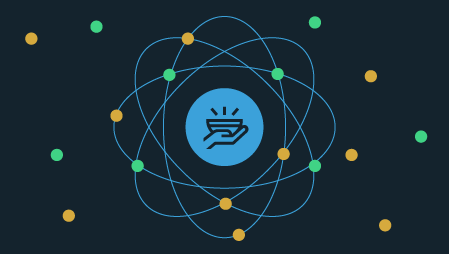Today, the combination of edge computing and artificial intelligence (AI)—dubbed edge AI—represent complementary technologies capable of delivering significant business value. What is edge AI, and how is it a step change for edge computing? Why does it make sense for IT and operations? To answer these questions, we must understand the edge environments where computing is migrating and evolving.
Decentralization of traditional IT infrastructure is a central thesis for edge computing as well as its complementary connection to centralized cloud computing. Moreover, the pervasive use of the Industrial Internet of Things (IIoT) along with wireless communications, including 5G, is affording deployment of scalable computing to the extremes of the physical or analog world—resulting in new computing architectures. These physical locations range from small, remote, distributed and rugged environments (e.g., oil wells or electrical substations) to very large and physically challenging facilities. Rugged, industrial settings such as manufacturing factories and plants, busy shop floors and even field-based refineries and pipeline stations are examples of typical industrial edge environments and represent the most demanding infrastructure to deploy, provision and manage.
IT infrastructure in these industrial locations is often outdated and lacks modern capabilities to process IIoT data, feed intelligence into other applications or aid meaningful decision making. Moreover, these environments are also more likely to be managed by operations technology (OT) staff rather than IT experts. It’s an important distinction, as those wearing hard hats and steel-toed boots have focused on managing industrial systems, such as supervisory control and data acquisition (SCADA) or digital control systems (DCS), and not IT.
The Edge Is Ready For Innovation
The introduction of edge technologies such as IIoT and edge AI pave the way for IT-OT convergence—offering innovation advantage to the business. Combined with edge computing, these technologies can help solve prior challenges, such as:
• Real-time demands: Deterministic or ultra-low latency computing and communication solutions are critical to machine control in production and IIoT environments.
• Connectivity constraints: Communications between machines, sensors or humans have been constrained by networking limitations and inaccessible processing capabilities.
• Security and policy management: Highly distributed, operational environments challenge traditional centralized enterprise security administration or management.
• Visibility: Instrumentation through sensors or increasing computing and communication capabilities to enable visibility to environments including agriculture, manufacturing, power utilities, transportation systems, retail, supply chain distribution or logistics.
• Open systems: Addressing data integration across machines, processes and edge applications along with unlocking interoperability between vendor solutions can enhance efficiency.
• Resilience: High-availability, reliability and safety are core requirements to mission-critical edge environments including manufacturing and energy systems.
The Edge AI Opportunity
We can define edge AI as AI algorithms running on gathered and processed data at the edge to gain insights and make local decisions. As AI workloads have predominantly resided in an organization’s data center, maximum compute power could be brought to bear on big data and to feed business intelligence into enterprise systems. More recently, AI has not only integrated into ERP or cloud-based applications, but is also changing the nature of how AI-powered solutions can improve business operations. There is also an emerging opportunity to integrate AI to the environmental extremes through edge computing.
The result? Edge AI is now an effective way to provide the compute capabilities in proximity to the environments where it is duly needed. The timing is perfect, considering that AI and IIoT are continuing to experience explosive growth as companies look for new ways to manage their business. In late 2019, Deloitte predicted that sales of edge AI chips could exceed 1.5 billion by 2024 and that this enterprise market will grow at an estimated compound annual growth rate of 20%.
Edge AI is compelling in that it can overcome certain limitations faced by on-premises and cloud-based AI technology. And, as described earlier, latency and real-time, connectivity, security, visibility, interoperability, resilience, and cost are all challenges that led to the development of edge computing. These same issues can be further addressed with edge AI. As industrial companies develop leading-edge technology such as autonomous manufacturing machinery, they can benefit from greater automation, operational responsiveness and improved insights.
Edge AI Use Cases: Automated And Augmented Solutions
As manufacturing, industrial or other companies operating at the edge evaluate edge AI strategies, there are two key ways it can help: First, by powering newly automated processes, and second, by augmenting traditional systems and operations. In both cases, edge AI can create new innovations that transform past procedures and provide a new competitive edge. Here are two edge AI use cases for both automation and augmentation to illustrate:
• Automation for proactive maintenance: Today, many industrial companies use edge AI and IIoT to improve machine maintenance. While predictive analytics is not new, now more computing power and faster response times are needed to fully capitalize on all that IIoT, machine learning and big data analytics can provide. Edge AI also provides the added advantage of local intelligence for inference or pattern matching, such as when to inspect, categorize and prioritize images of potential damage to field equipment to plan ideal maintenance schedules and avoid costly downtime.
• Augmenting traditional operations: Edge AI can also augment human-based, manual processes to improve operations. In the oil and gas industry, edge AI can power fully autonomous drilling to manage all critical mining functions without the need for human intervention. Autonomous drilling and machinery are effective ways to improve worker safety, reduce operating costs and drastically improve productivity levels.
The Future Of Edge AI Starts Now
As edge computing continues to grow, it will continue to pave the way for a wide variety of valuable new services, applications and use cases. And now, edge AI can optimize these examples even further, helping companies gain new ways of thinking about past business processes and create powerful new innovations to transform their business. In doing so, edge AI can help companies gain a new—and sustainable—competitive advantage.




